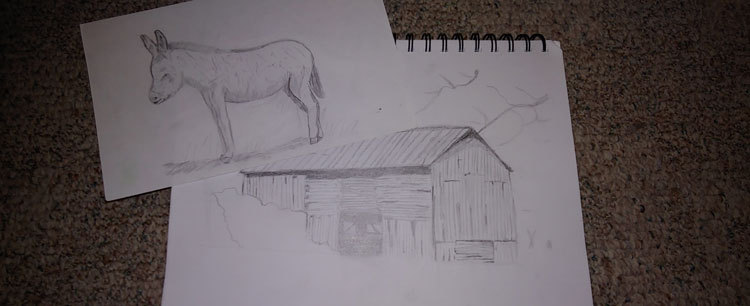We all likely remember a children’s picture book (or several) that we adored as children. Personally, I had an affinity for Go, Dog. Go!, a Dr. Seuss-esque beginning reader written and illustrated by P.D. Eastman. As one of the earliest introductions a child gets to literature, a picture book’s design and content are important to consider at every stage of production.
According to the article “A Brief History of Children’s Publishing and the Art of Visual Storytelling,” pictorial storytelling has been a foundation in many cultures since the dawn of time, dating back to early cave paintings. However, the original “picture book” only dates back 130 years ago, from artist Randolph Caldecott.
Since then, picture books have evolved to serve different agendas, from educational, such as teaching the alphabet, to more “edgy” topics in recent years, such as tackling what it’s like to be a child of divorce. With every change, however, according to editor and illustrator John Shelley, one thing remains consistent: the design of a children’s book must keep a child interested and entice them to turn the page.
Shelley explains that there are four types of illustrations in children’s books. The first type is a “boxed” illustration, meaning the image is completely contained within straight, abrupt edges. This can be achieved by placing a border around the image or by cropping the image to give the edges a sharp, clean line.
The second type of illustration is called a “vignette,” or an illustration that has fading edges. The borders are more loose, giving the image a sprawling, this-was-drawn-right-on-this-exact-page feel.
The third type is called a “spot” illustration. These are the small, free-floating images sprinkled throughout the pages.
Finally, “bleed” illustrations are images that are situated up to the edge of the page. Some bleed images span the entire two-page spread, and an elaborate bleed image can be effective for a highly-detailed climactic point in the book. These illustrations require an attentive designer who knows not to allow important parts of the illustration to fall in the gutter, the place where the pages are bound at the spine. If there is any action or a central character in the center of these full-spread illustrations, they will get swallowed by the gutter.
Shelley argues that with these four different types of illustrations, designers can play around with pacing and the mood invoked by a picture book. For example, let’s say an illustrator used four spot images to show a character—let’s name him Fred—running to catch the bus. The first image shows Fred grabbing his coat, the next shows him closing the front door, the third shows him running down his driveway, and the final shows Fred stepping on the bus. By strategically placing these images, you can create a sense of urgency that you would not get from a vignette or bleed image showing him stepping on the bus with text saying “Fred raced to the bus.”
Shelley also explains that the way the images are placed in relation to the text is imperative. A picture book’s goal should be to get the young reader to want to flip the page, eager to learn what happens next. So, for example, if the image of Fred rushing to the bus is placed on the left-hand page with the text “Fred raced to the bus, knowing if he missed it, he wouldn’t make it in time to present his project at the science fair,” the reader will find out whether he made it or not by simply looking to the right-hand page. But if you place that image and text on the right-hand page, the reader must turn to the next page to discover if Fred caught the bus in time. Shelley argues that a picture book’s illustrations and text should lead the reader down the page and to the right. The bottom right corner should be the ultimate goal of a page’s design.
Other aspects Shelley mentions to consider for designing a children’s book include identifying patterns to maintain throughout the book and the use of large and small images to create drama or draw focus to specific details. The most important items to remember, however, are the following: First, consider both the images and the text, not just one or the other. Second, remember your audience: both children and the adults who purchase the books and read to them. Third, keep in mind that the ultimate goal of a picture book’s design is to keep the reader moving forward. And finally, don’t be afraid to experiment and break the rules.

